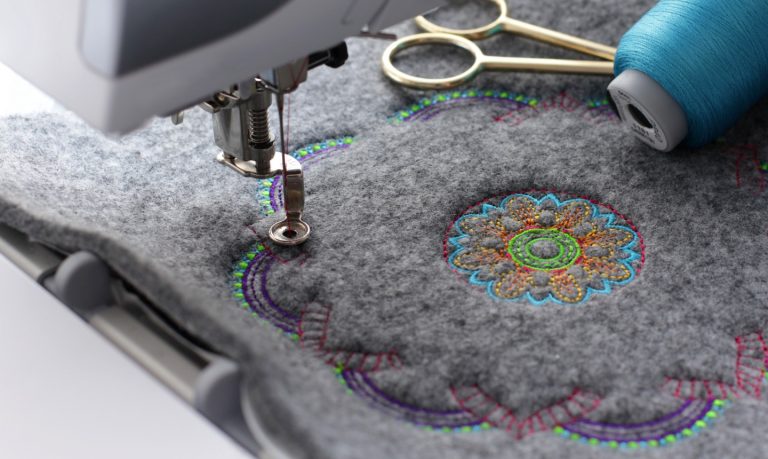Explore Various Kinds Of Needlework Digitizing Methods
Needlework digitizing has developed dramatically over the years, offering a myriad of methods to bring layouts to life in the electronic world. The realm extends to a lot more innovative strategies like photorealistic embroidery digitizing and the remarkable world of 3D embroidery digitizing.
Traditional Hand Embroidery Digitizing
Traditional hand needlework digitizing includes the process of transforming intricate hand-stitched layouts right into digital layouts for device needlework. This method calls for proficient artisans to carefully examine the handmade design and after that make use of specialized software program to recreate it in a digital layout. Each stitch, color, and information must be meticulously converted to make sure that the significance of the initial hand needlework is protected in the electronic variation.
One of the key obstacles of typical hand needlework digitizing is catching the ins and outs and subtleties of the handmade layout. Digitizing for Embroidery. Artisans have to possess a deep understanding of various embroidery methods, such as satin stitch, chain stitch, and French knots, to precisely reproduce these techniques in the digital world. In addition, they need to have a keen eye for information to make sure that the digital layout maintains the same level of virtuosity and craftsmanship as the original hand-stitched item
Punching Method
To seamlessly shift from typical hand embroidery digitizing to the punching strategy, artisans should currently concentrate on transforming the intricate digital styles right into directions that needlework equipments can analyze. The boxing strategy involves utilizing specialized software to develop digital files which contain commands for the needlework maker to follow. This procedure requires a deep understanding of not simply the style itself however likewise the capabilities and restrictions of the embroidery maker.

Auto-Digitizing Software Program Programs
Needlework digitizing has actually been reinvented by the advent of auto-digitizing software programs, offering artisans with sophisticated devices to convert electronic layouts into needlework machine directions successfully. Auto-digitizing software application make use of formulas to analyze electronic photos or vector data and generate embroidery styles instantly. These programs enable quick and precise conversion of complex styles into stitch patterns, conserving time and initiative for embroiderers.
One of the essential benefits of auto-digitizing software is its user-friendly user interface, making it accessible to both novices and knowledgeable digitizers. These programs usually include functions such as stitch editing and enhancing devices, string color matching, and the capability to preview the last embroidered design. In addition, auto-digitizing software can take care of complicated layouts with numerous colors and intricate information, producing top quality needlework files ideal for different apparel and fabric tasks.
While auto-digitizing software application supplies convenience and efficiency, it is vital for customers to understand the constraints of automated digitizing. Fine-tuning and manual changes may still be required to attain the wanted needlework high quality, especially when handling complex or special styles. By leveraging the abilities of auto-digitizing software along with hands-on digitizing strategies, craftsmens can improve their embroidery digitizing process and develop magnificent stitched pieces.
Photorealistic Needlework Digitizing
Using innovative electronic imaging methods, attaining photorealistic lead to embroidery digitizing has actually informative post become a popular skill among contemporary artisans. This strategy includes converting high-resolution pictures visit into complex stitch patterns that very closely mimic the initial design, leading to embroidery pieces that display lifelike information and deepness.
To accomplish photorealistic needlework digitizing, artisans should have a keen eye for information and a detailed understanding of exactly how different stitch types and thickness can affect the last result. By thoroughly mapping out each shade and shade in the picture, embroiderers can create a digital documents that overviews the embroidery machine to replicate the subtleties of the original picture precisely.
Photorealistic embroidery digitizing is especially popular in creating customized layouts for clothing, home decoration, and art pieces where capturing the essence of a photograph or artwork is critical. This method allows craftsmens to transform memories, landscapes, pictures, and detailed artwork into stunning embroidered masterpieces that showcase a mix of typical craftsmanship and sophisticated technology.
3D Embroidery Digitizing
With the innovation of electronic imaging strategies in achieving photorealistic lead to needlework digitizing, the exploration of 'D Needlework Digitizing' offers a new measurement to the complexities of design duplication. 'D Embroidery Digitizing' refers to the three-dimensional digitizing technique that includes depth and structure to needlework styles, developing a more realistic and visually appealing final item. This this page strategy makes use of software that replicates the impact of light and shadow on the embroidery design, enhancing its total visual impact.
Among the essential benefits of 'D Embroidery Digitizing' is its ability to make layouts look even more lifelike and vibrant. By adding deepness to the needlework layout, the last product appears much more practical and exciting (Digitizing for Embroidery). In addition, this technique enables more innovative freedom in design implementation, enabling embroiderers to try out different appearances and effects that were previously testing to accomplish
Conclusion
